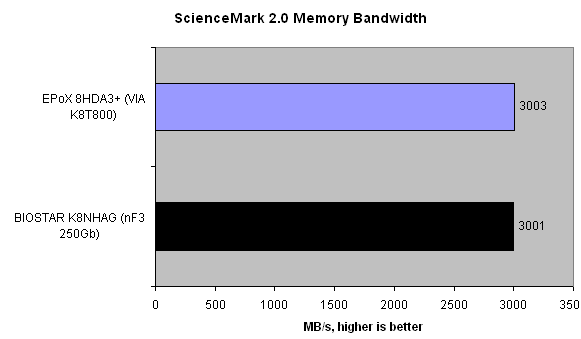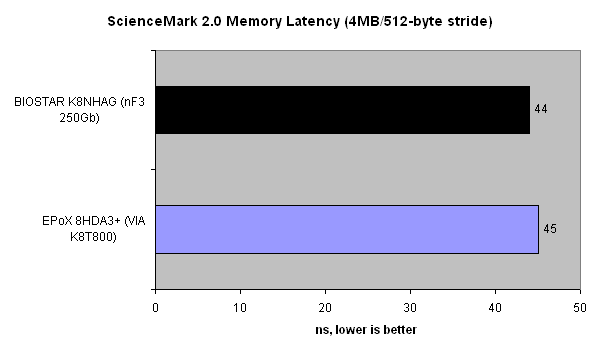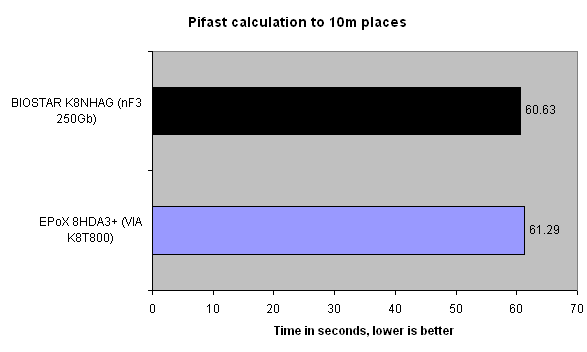ScienceMark 2.0 and Pifast
AMD's decision to mount the memory controller right on the CPU has, effectively, removed the need for chipset makers to tweak their respective northbridges. Performance, then, should be similar.
A single-channel memory controller running PC3200 memory has 3.2GB/s theoretical bandwidth. Around 95% of that bandwidth is realised on both chipsets, according to ScienceMark 2.0 bandwidth findings. This is an area in which the S754 Athlon 64 platform has always done especially well in.

The aforementioned on-chip memory controller takes away a chunk of memory access latency when compared with a regular CPU-northbridge-memory setup. There's very little to choose between the two chipsets.

Calculating Pi to 10m places requires high bandwidth and low memory latency. What we find is that BIOSTAR's K8NHA Grand motherboard is a touch faster than a VIA K8T800-powered board. The performance difference, as you might expect, isn't down to clock speeds; the K8NHAG actually runs 6MHz slower than EPoX's board.









